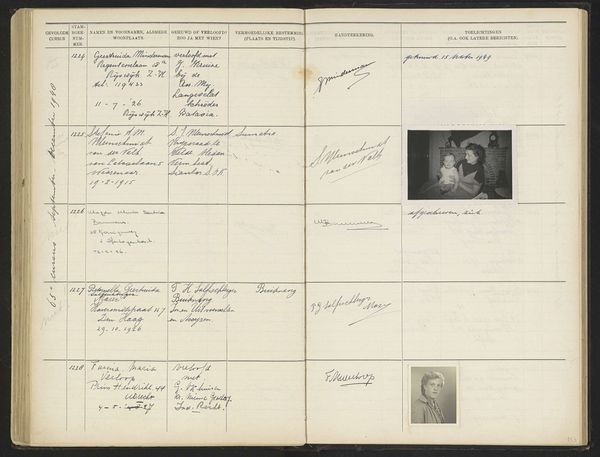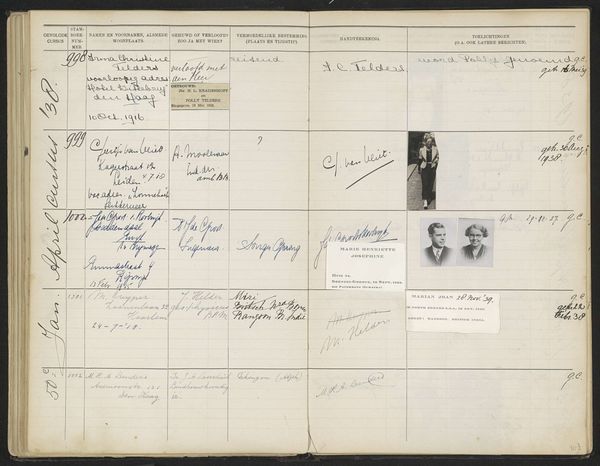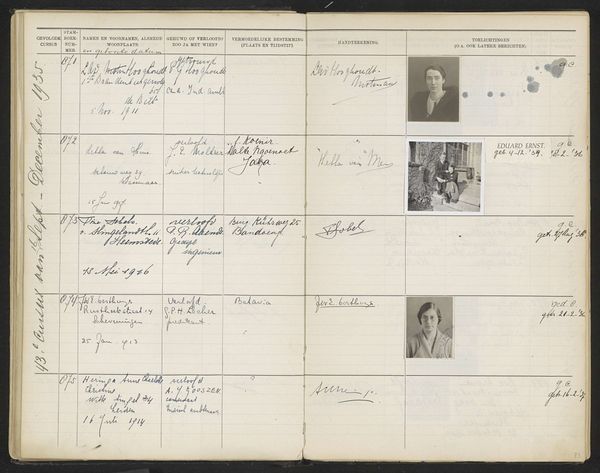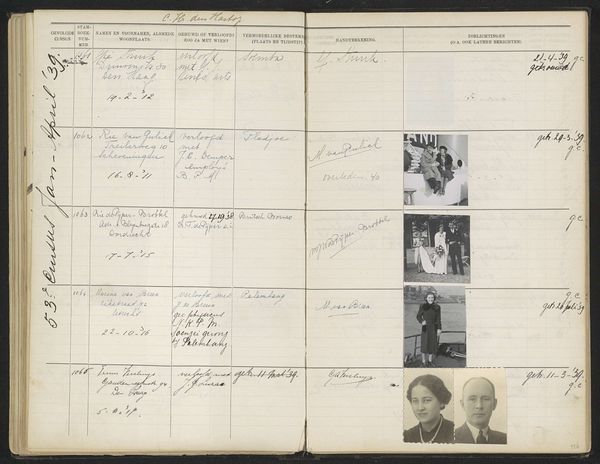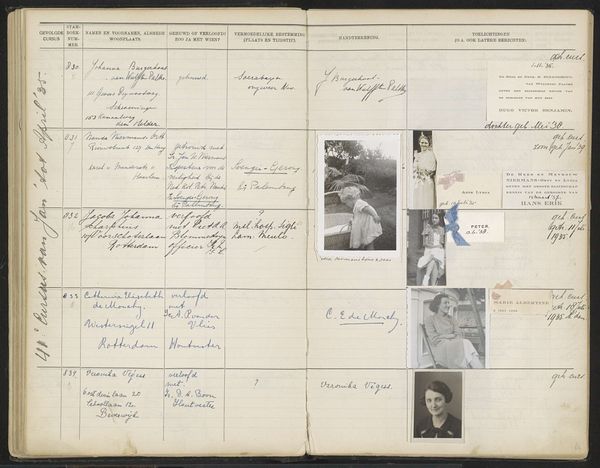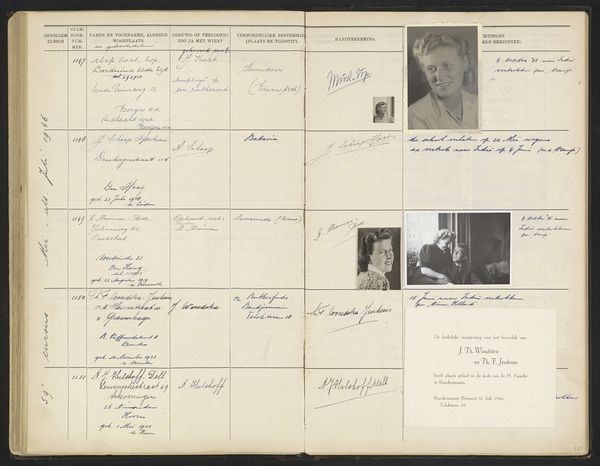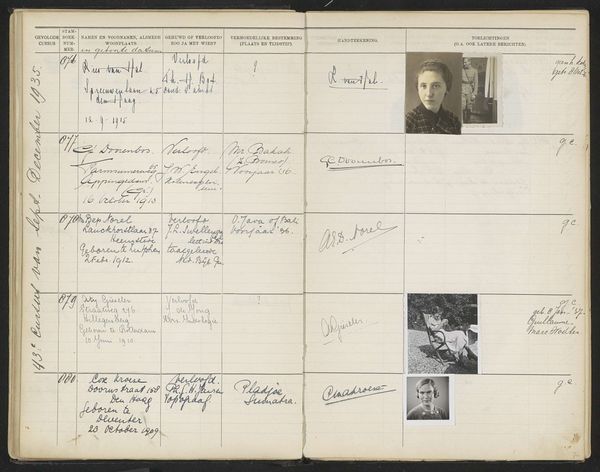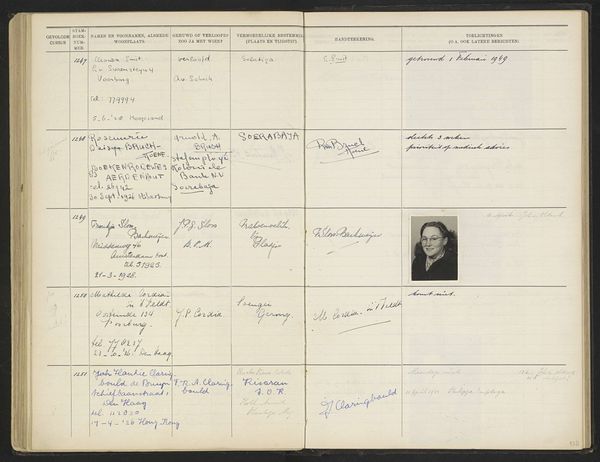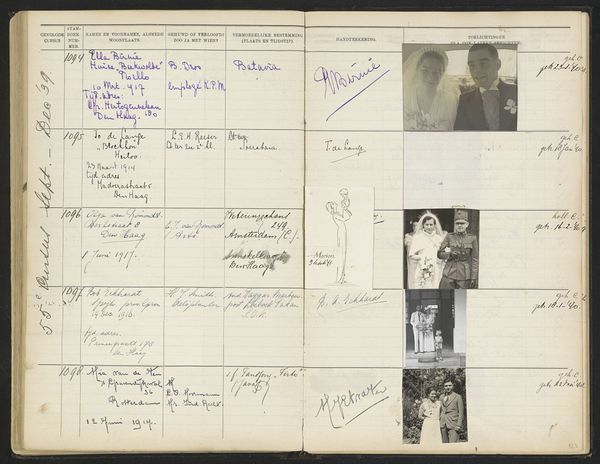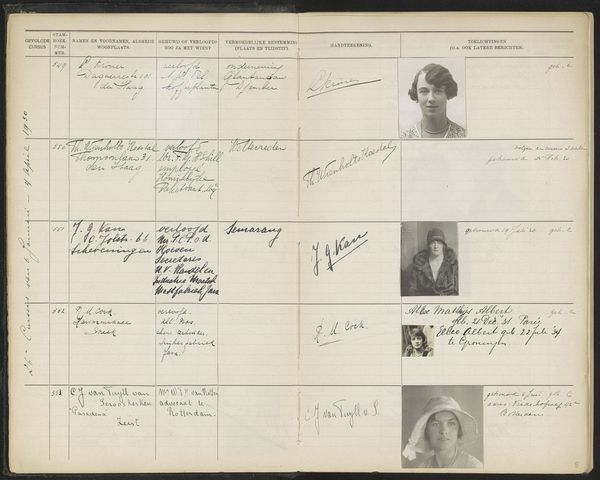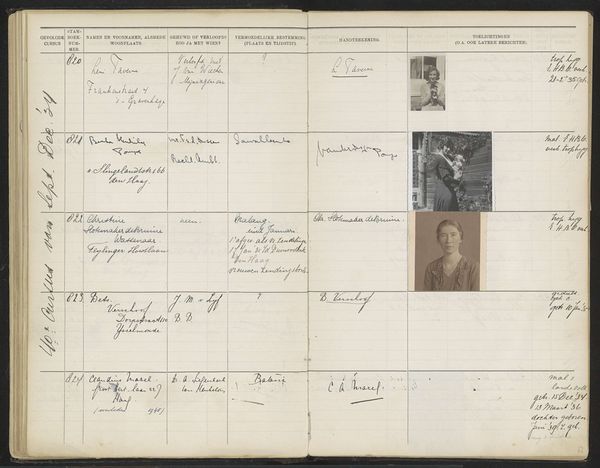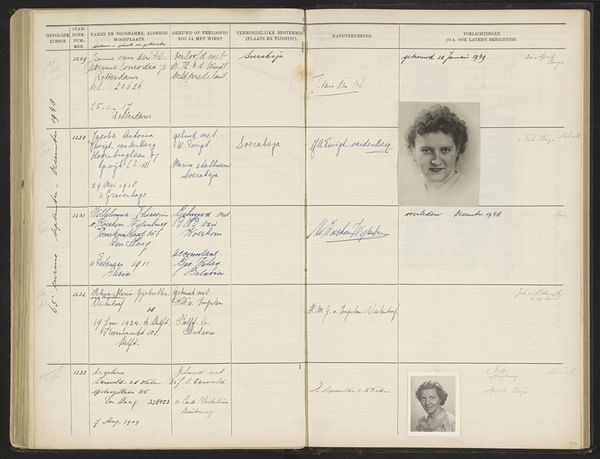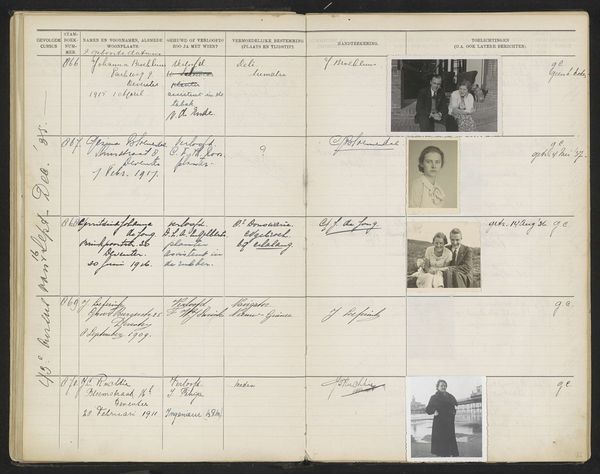
Blad 150 uit Stamboek van de leerlingen der Koloniale School voor Meisjes en Vrouwen te 's-Gravenhage deel II (1930-1949) Possibly 1948
0:00
0:00
paper, photography
#
portrait
#
paper
#
photography
#
modernism
Dimensions: height 337 mm, width 435 mm
Copyright: Rijks Museum: Open Domain
Curator: Here we have what’s documented as "Blad 150 uit Stamboek van de leerlingen der Koloniale School voor Meisjes en Vrouwen te 's-Gravenhage deel II (1930-1949)," likely created around 1948. It is a page from a register of students at a Dutch Colonial school. The materials seem to be primarily paper and photography. Editor: Oh, I’m immediately drawn to those portraits! They feel so personal amidst all that bureaucratic documentation. Each one tells a tiny story, doesn't it? You can almost see a glint of adventure, or maybe apprehension, in their eyes. Curator: Indeed. Note the stark contrast between the meticulously handwritten entries—details about birthplace, parentage, previous schooling—and the relatively modern technology of photographic portraiture. This intersection reveals a shift towards standardized record-keeping in the mid-20th century. Think of the labor involved in maintaining these records. Editor: Exactly! I mean, someone diligently inscribed all of this by hand—address, birthplace. It speaks to a very different world where efficiency meant committing everything to paper with impeccable penmanship. Plus, the composition on display – handwritten entries next to portraits – make me reflect on the intersection of private and public identity. What did it mean for these women to have their likeness and their history formalized like this? Curator: Precisely! And who had access to it? Furthermore, the materials themselves - the ink, the paper, photographic emulsion – were of varied costs to produce, requiring trade networks across geographies. Editor: It's strangely intimate yet institutional at the same time. Like flipping through someone's family album that’s ended up as a record, archived for posterity. The light in each of those snapshots hints at a forgotten story about place. There's so much quiet narrative packed in each individual, which resonates. Curator: Ultimately, viewing these records invites critical reflection. Who were these women? What trajectories led them here? What were their lives and their potential influenced by? Examining artifacts like this sheet of a register allows us to scrutinize both their presence, labor, and the underlying ideology structuring power and place. Editor: Definitely! Seeing them here feels almost like uncovering lost relatives, as well. So, really pondering who each person might've become long after this image was captured in this particular book of students feels like a deeply relevant question.
Comments
No comments
Be the first to comment and join the conversation on the ultimate creative platform.
